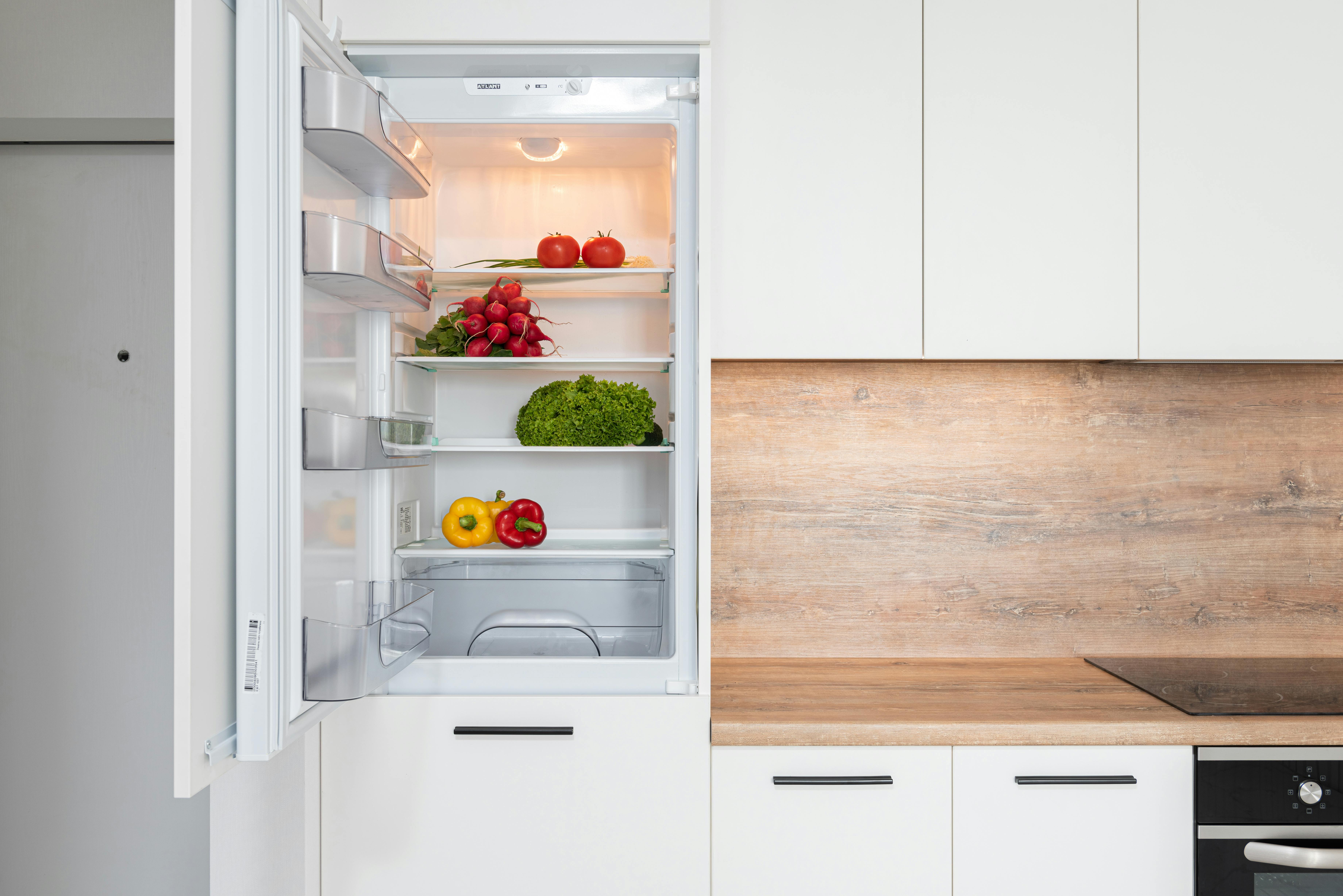Fruit salad is a delicious and healthy snack that can be enjoyed as a side dish or as a dessert. But how long can you store it in the fridge before it goes bad? In this article, we’ll discuss how long fruit salad can last in the fridge, and some tips for keeping it fresh for as long as possible.Fruit salad that is stored in the refrigerator can typically last for up to 3-4 days. It is important to make sure that it is kept in an airtight container and consumed within that time frame.
How To Store Fruit Salad To Make It Last Longer
Making fruit salad is a great way to enjoy a variety of flavors and textures, while also getting an abundance of vitamins and minerals. However, enjoying the same fruit salad for days can get boring. If you want to make your fruit salad last longer so that you can enjoy it over several days, it’s important to take the right steps when storing it.
The first step is to make sure all of the components are completely dry. This means that you should wash all of the produce thoroughly before preparing your salad and make sure to dry everything off with a paper towel or kitchen cloth.
It’s also important to use an airtight container when storing your fruit salad. This will help keep out any air or moisture, both of which can cause your fruit salad to spoil quickly. Additionally, be sure not to fill the container all the way up as this could create too much pressure and cause other issues.
Once your fruit salad is ready for storage, you should keep it in the refrigerator. Keeping it cold will slow down the natural ripening process and help preserve its freshness for longer. However, if you want your fruit salad to keep even longer, you may want to consider freezing it in individual portions so that you can thaw out just what you need when you’re ready to eat it again.
Finally, keep in mind that certain fruits are more prone to spoiling than others and should be used with caution when making a fruit salad for long-term storage. For example, things like bananas or avocados are more delicate and should generally be added right before serving rather than being stored with the rest of your ingredients.
Overall, with a few simple steps and precautions taken when making and storing your fruit salads, you can enjoy them for days without having them go bad quickly!
How Temperature Affects The Shelf Life Of Fruit Salad
Fruit salads are a nutritious and delicious way for people to get their daily servings of fruits. However, as with any food, the shelf life of a fruit salad is affected by many factors, including temperature. It is important to understand how temperature affects the shelf life of a fruit salad so that the food can be enjoyed in its freshest state.
When it comes to storing a fruit salad, the ideal temperature is between 33 and 41 degrees Fahrenheit. This range of temperatures helps to slow down the growth of bacteria while preserving freshness. Keeping a fruit salad at colder temperatures can also help extend its shelf life, but it should not be stored in temperatures below freezing. If kept at these temperatures for too long, the fruits in the salad can become frozen and lose their texture and flavor.
If stored at higher temperatures, usually above 50 degrees Fahrenheit, the shelf life of a fruit salad will be dramatically reduced. This is due to a rapid increase in bacteria growth at higher temperatures which can cause spoilage much faster than if kept at colder temperatures. It is also important to note that leaving a fruit salad out for more than two hours at any temperature can drastically reduce its shelf life as bacteria will start growing rapidly.
It is important to remember that when storing any type of food, including fruit salads, proper temperature plays an important role in maintaining freshness and extending shelf life. Keeping a fruit salad stored between 33 and 41 degrees Fahrenheit will help preserve its flavor and texture for longer periods of time while keeping it out of extreme cold or heat will help minimize spoilage.
Common Ingredients That Help Extend The Shelf Life Of Fruit Salad
Preserving the freshness and flavor of fruit salads can be a challenge due to their high water content. However, there are a few common ingredients that can be used to extend the shelf life of fruit salads.
One of the most popular ingredients for extending the shelf life of fruit salads is sugar. Sugar helps to preserve the freshness of the fruits and prevents them from fermenting too quickly. Additionally, sugar helps to add a pleasant sweetness to the salad, making it even more enjoyable.
Another common ingredient for extending the shelf life of fruit salads is vinegar. Vinegar helps to prevent bacteria from growing on fruits and vegetables, thus preserving their freshness for longer periods of time. Additionally, vinegar helps to balance out the sweetness of sugars in the salad and adds a nice tartness that complements other flavors in the salad.
Citric acid is another common ingredient that can be used to extend the shelf life of fruit salads. Citric acid helps to preserve color and flavor by preventing enzymatic browning reactions in fruits and vegetables. Additionally, citric acid adds a nice tart flavor to fruit salads that contrasts with sweet flavors from sugar or other sweeteners.
Salt is another useful ingredient for extending shelf life in fruit salads. Salt helps prevent spoilage by drawing moisture out of food products, which reduces their water activity and makes them less susceptible to microbial growth. Additionally, salt adds an enjoyable savory flavor that complements sweet flavors from sugar or other sweeteners in a fruit salad.
Finally, ascorbic acid (also known as vitamin C) is also an effective ingredient for preserving freshness in fruit salads. Ascorbic acid helps prevent discoloration caused by oxidation reactions and also prevents off-flavors caused by microbial growth on fruits or vegetables. In addition, ascorbic acid has antioxidant properties that help preserve vitamins and minerals in a salad over time.
By using these common ingredients, it is possible to extend the shelf life of your favorite fruit salads while maintaining their freshness and flavor!
Signs That Tell You When Fruit Salad Has Gone Bad
Fruit salad is a great way to enjoy the flavors of various fruits together. It’s a versatile dish that can be served as a dessert, side dish, or even as an appetizer. But, like any other food item, fruit salad can go bad. Knowing the signs that indicate when your fruit salad has gone bad will help you avoid any potential health risks.
One of the most common indicators that your fruit salad has gone bad is when it starts to have an unpleasant smell. If the odor has become sour or off-putting, then it’s likely time to throw it away. The texture of the fruit salad can also tell you if it’s gone bad. If it’s become slimy or mushy, then it should not be consumed.
Another sign to look for is discoloration of the fruits in your salad. If they’ve gone brown or black, they may no longer be safe to eat. Additionally, if you notice any mold growing on the surface of your fruit salad, then it’s time to discard it right away.
Finally, if your salad contains items such as yogurt or cream cheese, they may separate from the other ingredients and form a liquid on top of the mix. This is also a sign that you should throw out your fruit salad and not eat it anymore.
By keeping an eye out for these signs and throwing out any questionable fruit salads before consuming them, you can ensure that you’re eating only healthy and safe food items. Enjoying a delicious fruit salad doesn’t have to come at the cost of risking your health – so pay attention to what you’re eating!

Preparing Fruit Salads
Fruit salads are a great way to get lots of vitamins and minerals into your diet. Preparing them can be easy and enjoyable. Here are some best practices for preparing fruit salads:
• Choose a variety of fruits to create a colorful and interesting salad; try to pick fruits with different colors, flavors, and textures.
• Use fresh, ripe, in-season fruits for the best flavor.
• Peel and core any necessary fruits, such as apples and pears.
• Wash all the fruit thoroughly before cutting or slicing it.
• Cut the fruit into bite-sized pieces for easier eating.
• Add a touch of sweetness with honey or agave syrup, if desired.
• Add herbs or spices for additional flavor (mint, cinnamon, nutmeg, etc).
Serving Fruit Salads
In addition to preparing fruit salads properly, you also need to serve them correctly in order to ensure they look appetizing and taste their best. Here are some tips for serving fruit salads:
• Serve the salad in an attractive bowl or platter.
• When using melons like watermelon or cantaloupe, cut them into cubes or balls instead of slicing them thinly. This will make the salad more visually appealing.
• If you want to dress up the salad, add a dollop of yogurt or crème fraîche on top for added creaminess and flavor.
• Drizzle honey over the top of the salad just before serving it for extra sweetness and crunchiness from the crystallized honey.
• Serve the salad immediately after adding any dressings; if left too long, the dressing can make the fruit soggy.
Does Freezing Preserve The Quality Of Fruit Salads?
Freezing is one of the best ways to preserve the quality of fruit salads. When you freeze fruit salads, it helps to keep them fresher for longer, and prevents spoilage. This is because freezing slows down the growth of bacteria and other microorganisms that could cause spoilage in the fruit salad. The cold temperature of frozen fruits also helps to lock in moisture, which keeps them from drying out or becoming mushy.
Freezing can also help to preserve the flavor and nutritional value of fruits in a salad. When stored properly, frozen fruit salads can last for several months without losing any of their flavor or nutritional content. Additionally, freezing allows you to prepare batches of fruit salads ahead of time, so you can enjoy them whenever you want without having to worry about spoilage or loss of flavor.
One downside to freezing fruit salads is that some fruits may not freeze as well as others. For example, citrus fruits like oranges and lemons may become mushy when frozen, while other fruits like apples and peaches may stay firm but lose some of their sweetness and flavor. If you plan on freezing a fruit salad, it’s important to do your research beforehand so you know which fruits are best suited for freezing.
In conclusion, freezing is an effective way to preserve the quality of fruit salads by slowing down the growth of bacteria and locking in moisture. It also helps to retain flavor and nutrition while allowing you to prepare batches ahead of time. However, not all fruits freeze equally well so it’s important to do your research beforehand if you plan on freezing a fruit salad.
What Is The Recommended Refrigerator Temperature For Storing Fruit Salad?
Storing fruit salad in the refrigerator is an easy way to keep it safe and fresh. The optimal temperature for storing fruit salad is between 34 and 40°F (1-4°C). Keeping the temperature at this range will help preserve the flavor and texture of the fruit, while also preventing bacteria from growing on it. The refrigerator should also be set to a humidity level of between 60-70%, which will help to keep the fruit from drying out. It’s important to note that if the temperature gets too cold, it can cause the fruit to freeze and become mushy, so it’s best to check the temperature frequently and adjust as necessary.
It’s also important to store fruit salad properly in order to maintain its quality. Place it in an airtight container or wrap it tightly in plastic wrap or foil before refrigerating. This will help keep out moisture and prevent contamination from other foods in your refrigerator. Additionally, make sure that any cut fruits are stored separately from whole fruits, as cut fruits tend to spoil faster. Finally, be sure to use up any leftover fruit salad within two days of preparation, as this will help ensure its freshness and safety for consumption.
By following these guidelines, you can ensure that your fruit salad is stored safely at the proper temperature and humidity levels while maximizing its flavor and quality. Doing so will help you enjoy your delicious creations for longer periods of time!

Conclusion
Fruit salad can last up to 4 days in the fridge if it is stored correctly. It is important to use fresh ingredients, keep the salad chilled, and store it in an airtight container. If you want to make sure your fruit salad stays as fresh as possible, consume it within 2-3 days of making it. Additionally, adding a few tablespoons of lemon juice or vinegar can help extend its shelf life.
Overall, when prepared with care and stored properly, fruit salads are an excellent way to get your daily serving of fruits and vegetables. They are a healthy snack that can easily be made ahead of time and enjoyed later.
In conclusion, fruit salad can remain fresh for up to 4 days when properly stored in the fridge. As long as you use fresh ingredients and store the salad in an airtight container, you can enjoy your delicious creation for several days after making it.



